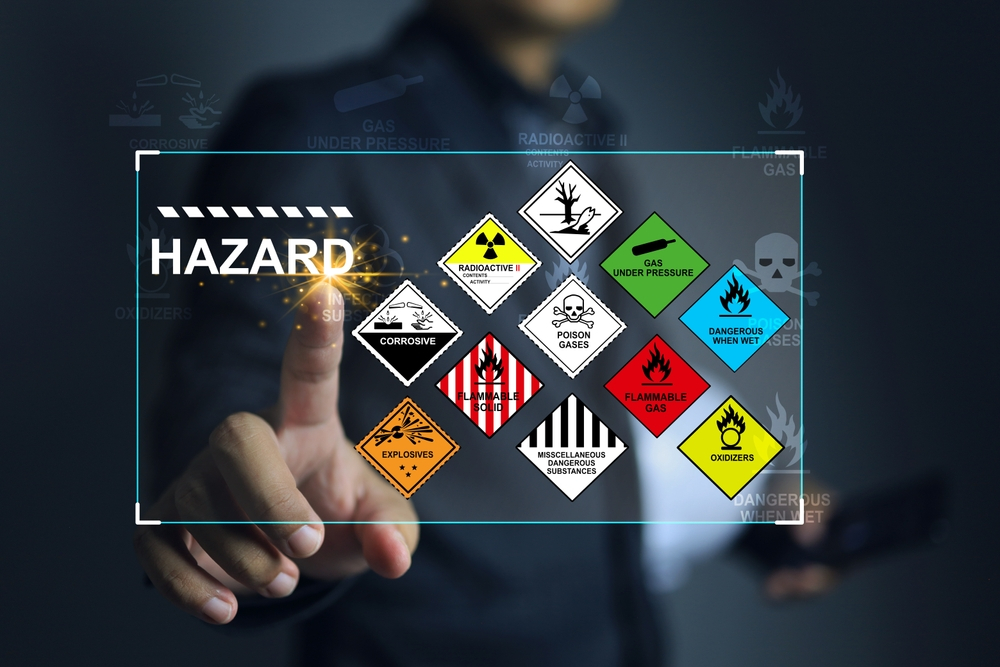The Greatest Guide To Roar Solutions
The Greatest Guide To Roar Solutions
Blog Article
What Does Roar Solutions Do?
Table of ContentsGetting The Roar Solutions To WorkNot known Details About Roar Solutions Facts About Roar Solutions Revealed
In order to safeguard installations from a possible surge an approach of analysing and identifying a possibly dangerous location is needed. The purpose of this is to guarantee the right selection and installment of equipment to inevitably avoid an explosion and to make sure security of life.
(https://papaly.com/categories/share?id=f67ddeb126ff42bfb724a48f0cebd961)
No tools should be installed where the surface temperature of the devices is higher than the ignition temperature level of the given hazard. Below are some typical dust hazardous and their minimal ignition temperature level. Coal Dirt 380C 225C Polythene 420C (thaws) Methyl Cellulose 420C 320C Starch 460C 435C Flour 490C 340C Sugar 490C 460C Grain Dirt 510C 300C Phenolic Material 530C > 450C Aluminium 590C > 450C PVC 700C > 450C Soot 810C 570C The probability of the threat being existing in a focus high adequate to trigger an ignition will vary from location to area.
In order to classify this threat an installment is split into areas of threat relying on the amount of time the dangerous exists. These areas are referred to as Areas. For gases and vapours and dirts and fibers there are three zones. Zone 0 Zone 20 A dangerous environment is highly likely to be existing and may be present for extended periods of time (> 1000 hours annually) and even continually Area 1 Zone 21 A hazardous ambience is possible but not likely to be present for extended periods of time (> 10 450 C [842 F] A classification of T6 implies the minimal ignition temperature is > 85 C [185 F] Hazardous location electrical equipment possibly developed for usage in higher ambient temperatures. This would certainly indicated on the ranking plate e.g. EExe II C T3 Ta + 60C( This indicates at 60C ambient T3 will not be gone beyond) T1 T1, T2, T3, T4, T5, T6 T2 T2, T3, T4, T5, T6 T3 T3, T4, T5, T6 T4 T4, T5, T6 T5 T5, T6 T6 T6 A T Class ranking of T1 indicates the maximum surface area temperature level generated by the tool at 40 C is 450 C. Presuming the linked T Class and Temperature level rating for the tools are suitable for the location, you can always utilize an instrument with a more strict Department score than needed for the area. There isn't a clear response to this question however. It really does depend upon the kind of equipment and what fixings need to be executed. Tools with particular examination treatments that can't be carried out in the field in order to achieve/maintain 3rd party score. Must come back to the manufacturing facility if it is before the equipment's service. Field Fixing By Authorised Personnel: Complex screening might not be required nevertheless details procedures may need to be adhered to in order for the equipment to maintain its third celebration ranking. Authorised workers must be employed to execute the work appropriately Repair should be a like for like replacement. New element need to be considered as a direct replacement needing no unique screening of the devices after the fixing is complete. Each tool with an unsafe rating should be assessed separately. These are laid out at a high level listed below, yet for even more thorough details, please refer straight to the standards.
All About Roar Solutions
The tools register is a thorough basics database of devices documents that includes a minimum set of areas to identify each item's location, technological criteria, Ex lover classification, age, and ecological information. The ratio of Detailed to Shut examinations will be identified by the Equipment Threat, which is examined based on ignition risk (the probability of a resource of ignition versus the possibility of a combustible environment )and the hazardous location classification
( Zone 0Area 1, or 2). Executing a durable Risk-Based Assessment( RBI )technique is crucial for making certain compliance and safety and security in handling Electrical Devices in Hazardous Areas( EEHA).
Roar Solutions Fundamentals Explained

In terms of eruptive danger, an unsafe area is an atmosphere in which an explosive ambience exists (or might be expected to be existing) in quantities that require special precautions for the construction, installment and usage of equipment. eeha certificate. In this short article we check out the challenges faced in the work environment, the threat control actions, and the required expertises to function safely
It is a consequence of modern life that we manufacture, keep or handle a series of gases or fluids that are deemed flammable, and a variety of dusts that are deemed flammable. These materials can, in specific conditions, develop eruptive atmospheres and these can have major and tragic consequences. A lot of us are acquainted with the fire triangular get rid of any kind of among the 3 aspects and the fire can not happen, however what does this mean in the context of unsafe areas? When breaking this down into its most basic terms it is essentially: a mix of a specific quantity of launch or leakage of a particular compound or material, mixing with ambient oxygen, and the existence of a resource of ignition.
In many circumstances, we can do little regarding the degrees of oxygen airborne, however we can have considerable impact on sources of ignition, as an example electric tools. Dangerous locations are documented on the dangerous area category illustration and are recognized on-site by the triangular "EX LOVER" sign. Here, amongst various other essential info, zones are split right into three kinds depending on the threat, the likelihood and duration that an eruptive ambience will exist; Zone 0 or 20 is regarded one of the most unsafe and Area 2 or 22 is considered the least.
Report this page